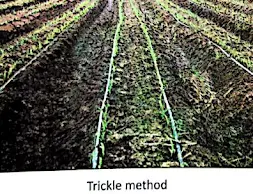Water Resources- Geography Guide for Class 8

Information about Water Resources
Title | Water Resources |
Class | Class 8 |
Subject | Class 8 Geography |
Topics Covered |
|
Water Resources
Water is one of the most precious resource. Earth is also called a watery planet because nearly 70% of the earth's surface is covered with water. About 97% of the earth's total water is present in the oceans and seas. This is saline water which supports incredible biodiversity of marine life, but is not suitable for human consumption or for watering crops.
The remaining 3% is fresh water, which is found in the following forms:
- 0.32% is available in lakes, rivers, atmospheric and soil moisture, etc.
- 2.0% is in the form of ice caps and glaciers.
- 0.68% is available as ground water.
The main source of fresh water is rainfall.
- The rain water continuously gets recycled in nature through evaporation, condensation and precipitation, which is known as hydrological cycle.
The distribution of fresh water resources on the earth's surface is uneven.

Fresh water is found in abundance at places which receive heavy rainfall, whereas availability of water is less in the areas where rainfall is low. The average annual precipitation of the world is estimated to be 1,050 millimetres per year or 2.9 millimetres per day.
The map given indicates the uneven distribution of rainfall in the world.
- Areas of High Rainfall: Equatorial regions in South America, Africa and South-East Asia.
- Areas of Low Rainfall: Tropical deserts—Sahara, Arabian, Central and Western Australia, Kalahari, Central and Northern Eurasia, Central Asia, Polar areas, etc.
Pollution of Water
The quality of water in some rivers is adversely affected as the untreated industrial waste and urban waste is dumped into them. This makes the river water unsuitable for consumption. The polluted water, if consumed, causes many diseases like cholera, jaundice, typhoid, etc. It also disturbs the ecosystem. Hence, serious efforts are being made to clean water in the rivers.
Multipurpose River Valley Projects have been developed all over the world to utilise water. These projects serve many objectives at the same time. Under a multipurpose river valley project, a dam or series of dams are constructed across the river for storing water. This stored water is used for several purposes, such as irrigation, generating hydroelectricity, afforestation, flood control, navigation, etc.
Damodar River Valley Project and Hirakud Dam in India, Aswan in Egypt and Hoover Valley Project in USA are some of the major multipurpose river valley projects.
The dams are very useful for various purposes. But large dams have come under a lot of criticism from environmentalists, as they are causing ecological problems, like:
- Extensive forests submerged under water.
- Aquatic life gets affected.
- River water gets diverted.
- Population gets displaced.
- Result in soil erosion.
- During excessive rain, floods are caused.
Water Conservation Methods
Water is an indispensable resource. The sources of water are limited and are reducing every year. Due to the effects of global warming, the frequency of rain has also become unpredictable, therefore, it is very essential for us to conserve it.

Following are some of the ways by which water can be conserved:
- Water harvesting is one of the methods of saving surface water runoff.
- The surface water runoff can be minimised by having vegetation cover to improve underground storage.
- The demand of water for industries can be met by the recycled water.
- The domestic demand can also be reduced by using modern methods of recycling. The already used water can be reused for watering plants, flushing toilets, etc.
- Water can be saved by adopting modern methods of irrigation, such as drip or trickle irrigation technique and sprinkler method of irrigation.
- The rain water can be impounded by making dams across the rivers.
- Water can be conserved by installing water fixtures, such as sensor taps in public places.
- Maintenance of lakes and ponds also helps in increasing the aquifer (water table) of underground water.
- Water can be conserved by educating and sensitising people towards the urgent need to conserve water and not to waste fresh water.




